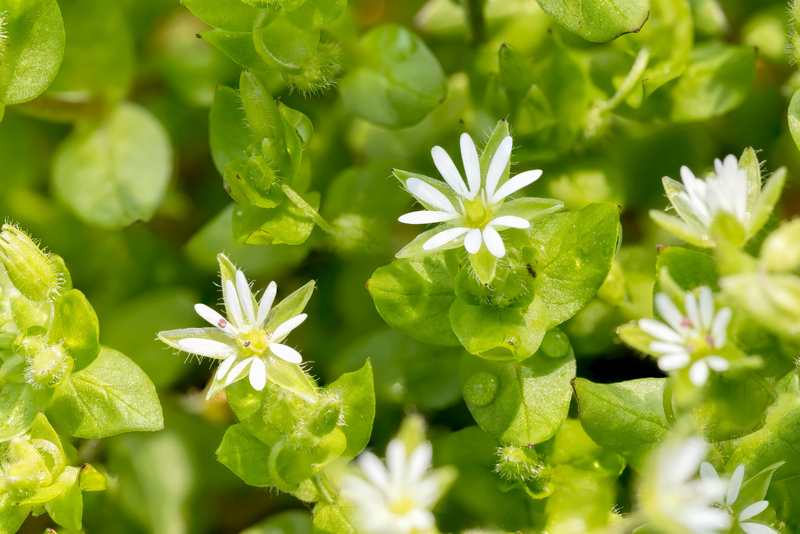Innovative Hedge Trimming Techniques and Shape Selection
Posted on 26/09/2025
Innovative Hedge Trimming Techniques and Shape Selection
Hedge trimming is an age-old gardening practice, but recent advancements and creativity have redefined how we approach this art. Not only do modern hedge trimming techniques offer enhanced precision and appeal, but inventive hedge shapes can also transform any ordinary garden into a stunning landscape feature. In this comprehensive guide, we explore innovative hedge trimming techniques and provide insights into creative hedge shape selection for your landscape design.

Why Are Innovative Hedge Trimming Techniques Important?
Traditional hedge trimming involved simple straight lines and minimal shaping. However, with the rise of urban gardening, eco-friendly landscaping, and the increasing demand for personalized outdoor spaces, hedge maintenance has evolved. Adopting innovative techniques offers several benefits:
- Enhanced Aesthetics: Modern methods create visually stunning and unique shapes that can become the focal point of your garden.
- Improved Growth and Health: Creative trimming encourages better airflow, sun penetration, and disease prevention.
- Functional Design: Well-shaped hedges can serve as natural privacy screens, windbreaks, or artistic installations.
Let's delve into the most current and creative hedge trimming approaches, along with guidance on selecting the perfect shape for your outdoor space.
Essential Hedge Trimming Tools for Advanced Techniques
Every precise trim starts with the right equipment. For gardeners aiming to apply innovative hedge shaping techniques, investing in quality tools is non-negotiable. The must-have tools include:
- Electric or battery-powered hedge trimmers for efficiency and accuracy
- Manual hedge shears for detail work and topiary art
- Long-reach trimmers for tall or hard-to-access hedges
- Hedge trimming templates for consistent shapes and curves
- String lines, stakes, and measuring tapes to ensure symmetry
Always keep blades sharp and clean, as sharp tools create cleaner cuts that heal faster and prevent disease.
Innovative Hedge Trimming Techniques
1. Layered Trimming
Layered hedge trimming is inspired by modern landscaping trends. It involves cutting the hedge into multiple horizontal tiers or steps. This approach:
- Adds depth to your garden
- Highlights variations in foliage color and texture
- Provides habitat for pollinators and birds
Start by marking the desired levels with string. Carefully trim each layer to the preferred thickness, keeping the lowest layers wider to allow sunlight for all areas.
2. Cloud Pruning
Also known as niwaki, cloud pruning originated in Japan and emphasizes forming organic, cloud-like domes in the hedge. Cloud pruning is suitable for species with small, dense foliage such as yew, boxwood, and privet. This technique:
- Creates a dynamic, sculptural look
- Brings an oriental touch to your garden
- Encourages strong, healthy growth by thinning out dense branches
Cloud pruning requires patience and a keen eye for balance. Begin by thinning the hedge and identifying potential 'clouds.' Gradually sculpt these shapes, maintaining a slightly flattened top for each dome.
3. Topiary Artistry
Topiary hedge trimming is the pinnacle of creative pruning. Using wire frames or hand-drawn diagrams, you can shape hedges into animals, geometric objects, or whimsical figures. Topiary is best started on young, flexible hedges and demands regular maintenance for crispness and clarity. The most innovative topiary artists use:
- 3D wire frames as exterior guides
- Pattern stencils for wall or mural topiaries
- Precision shears for fine details
*Tip: Use a temporary marker or string before committing to major trims.*
4. Spiral Trimming
Spiral-shaped hedges add a fascinating focal point to walkways or garden entrances. To achieve a perfect spiral:
- Mark the spiral line using ribbon or string
- Start trimming from the top down, following your guide line
- Regularly step back to view progress and adjust as needed
Species like boxwood or privet are ideal due to their dense growth and low maintenance needs.
5. Eco-friendly Trimming Techniques
Modern innovation in hedge maintenance embraces sustainability. Some eco-friendly techniques include:
- Using battery-powered trimmers to reduce emissions and noise
- Collecting clippings for compost or mulch, minimizing waste
- Embracing partial trimming, leaving sections untrimmed to support wildlife
6. Vertical Gardens and Living Walls
Innovative landscapers are integrating vertical gardening techniques with hedge trim work. Living walls:
- Maximize greenery in small spaces
- Can be tailored to any shape or pattern
- Encourage biodiversity and urban greening
This method involves training hedge species (like privet, laurel, or boxwood) to vertical supports and trimming them to grow in defined, artistic patterns.
Selecting the Perfect Hedge Shape: Design Ideas & Inspirations
Your hedge's shape can define the character and ambiance of your entire garden. Take inspiration from renowned gardens or create your own signature look. Here's how to choose:
1. Traditional Hedge Shapes
- Flat-topped rectangles: Classic and clean, suitable for formal gardens or boundary markers.
- Rounded domes: Soften the appearance and blend with naturalistic landscapes.
- Tapered "A" shape: Wider at the base to maximize sunlight exposure, ideal for healthy lower growth.
2. Contemporary and Artistic Shapes
- Spirals and corkscrews: Visual excitement and designer flair.
- Wave patterns: Imitate the natural undulations of hills or water for a calming effect.
- Cube or pyramid forms: Strong modern statement, perfect for avant-garde gardens.
- Abstract or freeform shapes: Unleash creativity with non-symmetrical, flowing designs.
3. Functional Shapes
- Archways and tunnels: Create natural passages and doorways, especially inviting along paths.
- Screens and living fences: Dense, upright shapes for privacy and sound reduction.
- Wall murals: Train low hedges into intricate artistic designs or even garden signage.
Innovative Approaches to Hedge Shape Selection
Embracing the latest trends and approaches can help you choose or design a hedge shape that fits both your practical needs and creative vision.
1. Site Analysis and Microclimate Considerations
Selecting the right hedge shape involves evaluating:
- Sunlight exposure: Tapered shapes are more resilient in shaded areas.
- Wind direction: Dense, tall hedges best as windbreaks.
- Space and scale: Large gardens can accommodate grand, sculptural forms, while urban gardens might need slender or vertical designs.
2. Plant Species and Growth Habits
Certain plant species lend themselves to specific shapes or trimming methods:
- Boxwood and yew: Flexible for topiary and detailed trimming.
- Privet and beech: Fast-growing, ideal for larger or privacy hedges.
- Laurel: Favored for dense screening and simple, bold shapes.
3. Integrating Technology in Hedge Design
- Using laser levels and string grids for geometric precision
- Employing digital design apps for mockup and simulation of hedge shapes
- Automated trimmer robots for repetitive cuts in large-scale gardens
Best Tips for Maintaining Creative Hedge Shapes
Consistent care ensures that intricate or unique shapes remain sharp and healthy:
- Regular Trimming: Prune at least twice yearly for clean lines, more often for formal and topiary shapes.
- Fertilization: Feed hedges with a slow-release fertilizer each spring and water regularly in dry spells.
- Inspection: Watch for signs of disease, pests, or dieback. Address promptly to preserve the design.
- Shaping Sessions: Use guides, stencils, or templates during every maintenance session to retain symmetry.
Pro Tip: Take photographs during each stage to track growth and visualize your next trim.

Common Pitfalls to Avoid When Using Advanced Hedge Trimming Techniques
Even enthusiastic gardeners can stumble when experimenting with innovative methods. Avoid these pitfalls:
- Over-trimming: Aggressive cuts can stress or kill plants--always aim for gradual shaping.
- Ignoring plant health: Shape comes second to health; prioritize disease removal and overall vigor.
- Poor timing: Avoid trimming during frost or extreme heat. Best periods are late spring and early autumn.
- Lack of patience: Unique hedge shapes often take several seasons to fully mature and display their intended form.
Conclusion: Transform Your Garden With Innovative Hedge Trimming and Shapes
By embracing innovative hedge trimming techniques and bold shape selection, you can elevate your outdoor space from ordinary to extraordinary. Whether your preference is for the structured elegance of traditional shapes, the whimsical artistry of topiary, or the sustainability of modern green walls, your hedge can become a living masterpiece. Armed with the right tools, creative vision, and commitment to regular maintenance, there's no limit to what your landscape can achieve.
Stay inspired, experiment safely, and let the latest methods in hedge design and trimming guide you toward a garden you'll love for years to come.

